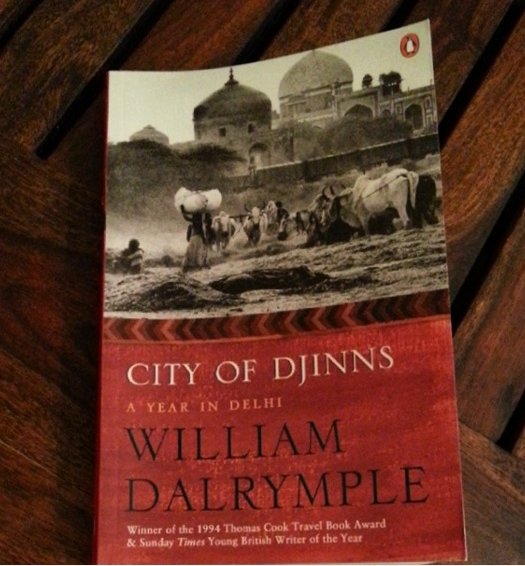William Dalrymple
After finishing the book, I was surprised that it was only 339 pages, there is so much in it, and unsurprisingly so. The author mentions in the prologue that depending on whom you ask, the number of Delhis that have existed before the current one is anywhere between 7 and 21, and it is to his credit that he has probably brought out many, many of them. Not in the way of the structured and stratified thirty feet wall that represents 3000 years of continuous occupation to which Professor Lal points and says “The whole history of Delhi is there”, but through different journeys.
There is clearly a preference for the ‘Twilight period’ – between the Mughal decline and the British ascendancy, but there are quite a few pages spent on the Mughal golden age, Tughlaq and other pre-Mughal Delhi rulers, right up till the Mahabharata’s Indraprastha and before, and the post Independence era. It must be mentioned that despite the seriousness with which the author has approached the content, his wit shines through!
The journeys begin somewhere ‘near the Suti village of Nizamuddin’ where the author and his wife Olivia settle down under the watchful gaze of Mrs.Puri, their landlord. ‘International Backside Taxis’ and specifically Balvinder Singh’s taxi, is the preferred mode of transportation as the author travels through Delhi and then back in time, all in one year!
The 1984 riots are the first stop, followed by the Partition, which arguably caused a lot of the Mughal heritage to move to Pakistan. There are poignant voices reminiscing about the sophisticated Dilli, which by 1993 has been reduced to a very poor neighbour of a metropolis. We read about crafts like Urdu calligraphy dying out as the new generation look for better prospects to earn money, while some others like pigeon flying and partridge fighting have done relatively better.
A lot of the book from then on is about the early days of the British and whom the author calls in his later book ‘White Mughals’. The nuances of the era and the status of the ‘half breeds’ (I read about McCluskieganj for the second time) have been brought out well. The inspiration for the author’s later works can clearly been seen in these sections. There is also a chapter on the eunuchs which draws from their history and also shows their plight in the present.
Dr.Jaffrey serves as the author’s guide to the Mughal era- its succession battles and court intrigue, and the Sufis of the earlier and current eras. I have always wondered about the existence and identity of the Mughal descendants, and an interview with probably the last generation of direct descendants is quite touching. (“For all its faults, we love this city. After all we built it”) Ibn Batuta’s journal gives us very good insights into the times of Tughlaq, and I learnt that the capital shifting (that makes him notorious in textbooks) was not whimsical, but a cruel punishment to his citizens!
At first, I wondered about the title and why the djinn stories were relegated to a couple of chapters, until I realised that it was more a reference to the ‘ghosts’ of many Delhis, existing in the current one – as memories or as a living embodiment. The author truly manages to bring out the ‘India lives in many centuries’ adage – in his own words “a portrait of a city disjointed in time, a city whose different ages lay suspended side by side as in aspic, a city of djinns’. If I close my eyes, I can see the Delhi of 1993, with the ‘new’ Marutis and Diwali/Dussehra celebrations and then, as though in a flashback video, I can go slowly back in time. The Delhi in the few decades after Independence – from the horrors of partition to the one occupied by retired military personnel, followed by the one during British rule with the Raj and its memsahibs, and then further back into Mughal times and beyond. And that is how memoirs should be written! In the one year that the author frames the book, we see the seasons change, and in some way it told me that this was how it has always been, and this is how it will always be.

